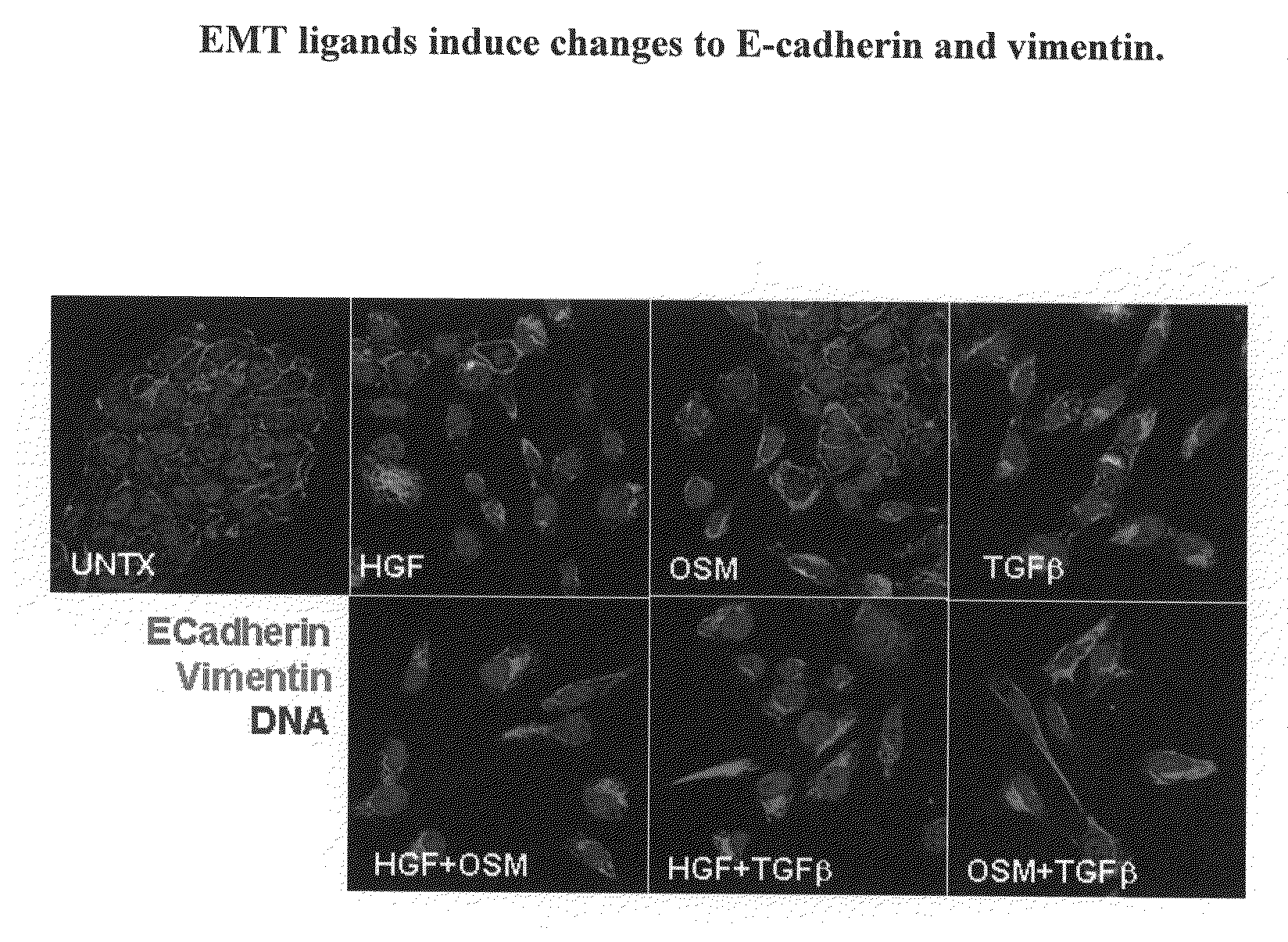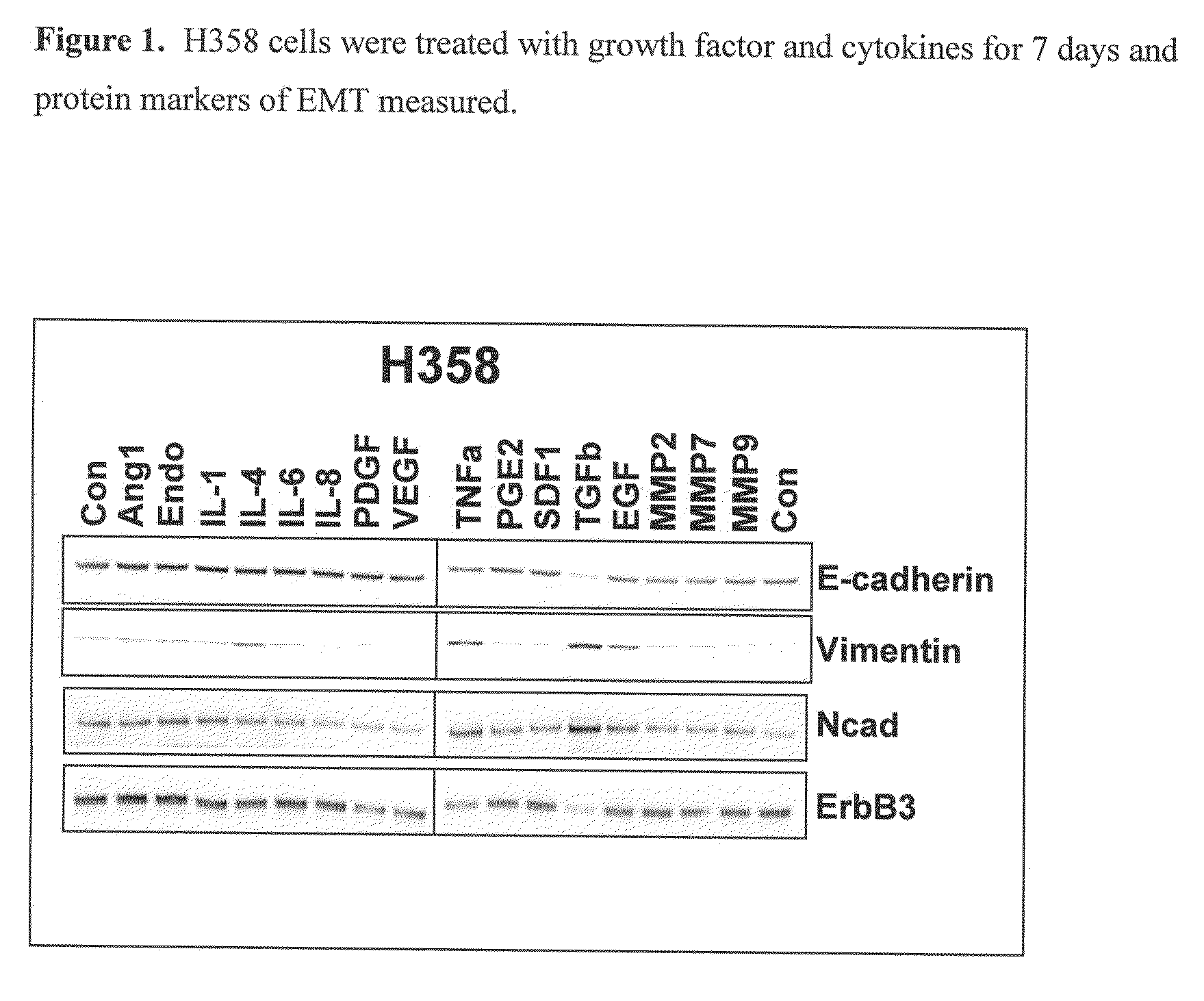Methods for the identification of agents that inhibit mesenchymal-like tumor cells or their formation
a technology of mesenchymal-like tumor cells and agents, applied in the field of emt cell models, can solve the problem that none of the current chemotherapies possess such an ideal profil
- Summary
- Abstract
- Description
- Claims
- Application Information
AI Technical Summary
Benefits of technology
Problems solved by technology
Method used
Image
Examples
Embodiment Construction
[0040]The term “cancer” in an animal refers to the presence of cells possessing characteristics typical of cancer-causing cells, such as uncontrolled proliferation, immortality, metastatic potential, rapid growth and proliferation rate, and certain characteristic rmorphological features. Often, cancer cells will be in the form of a tumor, but such cells may exist alone within an animal, or may circulate in the blood stream as independent cells, such as leukemic cells.
[0041]“Cell growth”, as used herein, for example in the context of “tumor cell growth”, unless otherwise indicated, is used as commonly used in oncology, where the term is principally associated with growth in cell numbers, which occurs by means of cell reproduction (i.e. proliferation) when the rate the latter is greater than the rate of cell death (e.g. by apoptosis or necrosis), to produce an increase in the size of a population of cells, although a small component of that growth may in certain circumstances be due a...
PUM
| Property | Measurement | Unit |
|---|---|---|
| concentration | aaaaa | aaaaa |
| molecular weight | aaaaa | aaaaa |
| depth | aaaaa | aaaaa |
Abstract
Description
Claims
Application Information
 Login to View More
Login to View More - R&D
- Intellectual Property
- Life Sciences
- Materials
- Tech Scout
- Unparalleled Data Quality
- Higher Quality Content
- 60% Fewer Hallucinations
Browse by: Latest US Patents, China's latest patents, Technical Efficacy Thesaurus, Application Domain, Technology Topic, Popular Technical Reports.
© 2025 PatSnap. All rights reserved.Legal|Privacy policy|Modern Slavery Act Transparency Statement|Sitemap|About US| Contact US: help@patsnap.com



